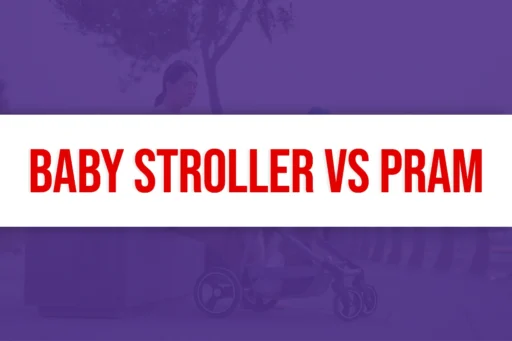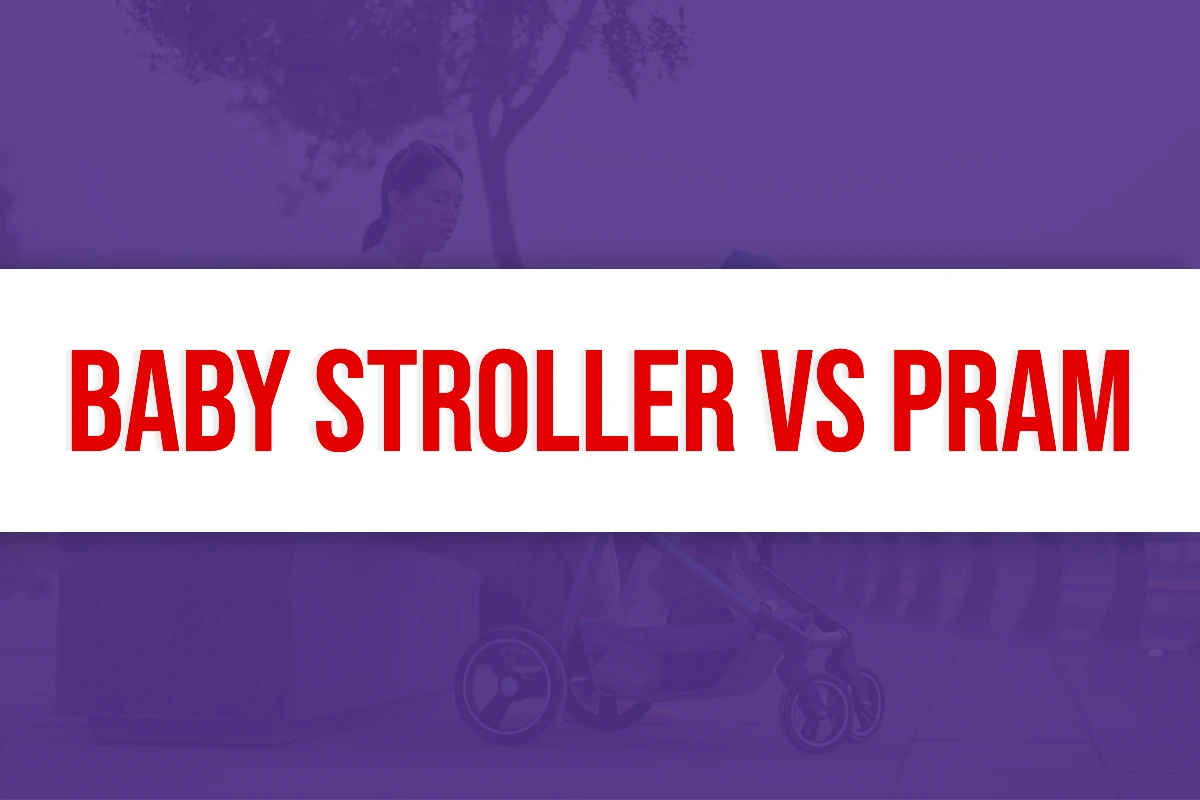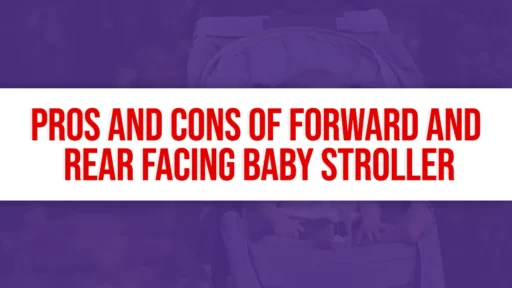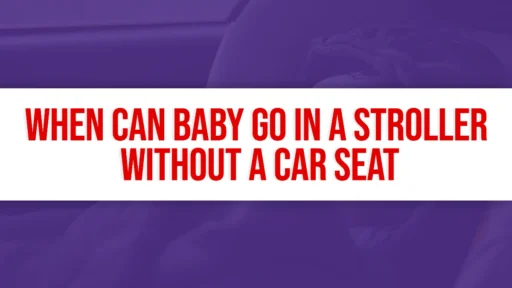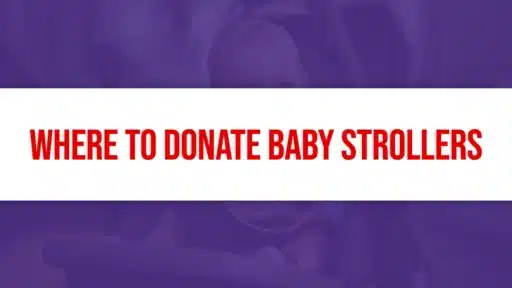Choosing between a baby stroller and a pram can be confusing. Both have unique features and benefits.
Parents often find themselves torn between these two essential baby items. A stroller offers convenience and flexibility, while a pram provides comfort and style for newborns. Understanding their differences can help you make an informed decision. This comparison aims to simplify your choice, ensuring the best fit for your lifestyle and your baby’s needs.
Whether you’re a new parent or looking to upgrade, this guide will clarify the pros and cons of each option. Let’s dive into the details and help you choose the perfect ride for your little one.
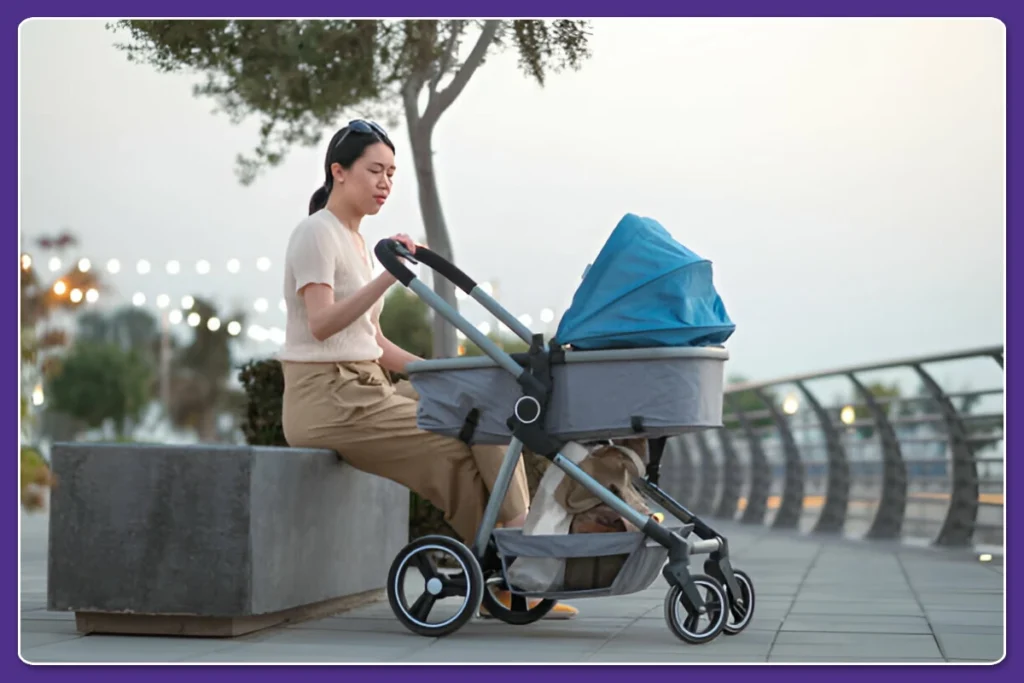
Stroller Basics
Choosing the right baby stroller can be overwhelming for new parents. Understanding the basics helps make an informed decision. Let’s break down the essentials of a baby stroller under the following headings:
Design And Features
Baby strollers come in various designs, each catering to different needs. Some popular styles include:
- Lightweight Strollers: Easy to carry, ideal for quick trips.
- Jogging Strollers: Designed for parents who run or jog.
- Double Strollers: Perfect for twins or siblings close in age.
Common features to look for include:
- Adjustable handlebars for different heights.
- Reclining seats for nap times.
- Ample storage for baby essentials.
Each design and feature aims to provide comfort and convenience.
Age Suitability
Different strollers are suitable for different age groups. Here’s a simple guide:
| Age Group | Recommended Stroller Type |
|---|---|
| Newborns (0-6 months) | Full-recline strollers or travel systems |
| Infants (6-12 months) | Convertible strollers with sturdy support |
| Toddlers (12+ months) | Lightweight or jogging strollers |
Matching the stroller to your child’s age ensures safety and comfort.
Pram Basics
Understanding the basics of a pram is essential for new parents. A pram is designed for newborns and infants. It provides a comfortable and safe space for your baby. Prams are ideal for younger babies who need to lie flat. They support the baby’s head, neck, and spine.
Design And Features
Prams have a classic design. They usually come with a sturdy frame and large wheels. This makes them perfect for smooth rides on various surfaces. The bassinet is an important feature. It allows the baby to lie flat. This is crucial for proper spinal development.
Another feature is the reversible handle. This lets you change the direction your baby faces. Many prams have adjustable height handles. This is convenient for parents of different heights. Storage space is also a key feature. Prams often come with a large basket underneath. This is useful for carrying baby essentials.
Age Suitability
Prams are suitable for newborns to infants up to six months old. They are designed to support babies who cannot sit up or hold their heads up. The flat lying position is crucial for young babies. It ensures they are comfortable and safe.
Once your baby can sit up, you may need to switch to a stroller. Prams are not ideal for older babies who want to sit and explore their surroundings.
Here is a quick reference table for age suitability:
| Age | Pram Suitability |
|---|---|
| Newborn to 3 months | Highly suitable |
| 3 to 6 months | Suitable |
| 6 months and above | Not suitable |
Understanding these basics will help you choose the right pram for your baby. Make sure to consider both design and age suitability.
Safety Considerations
Ensure both baby strollers and prams have secure harnesses. Check for stable wheels and brakes. Always supervise your baby during use.
When choosing between a baby stroller and a pram, safety is paramount. Both options provide unique features that ensure your baby’s well-being. It’s essential to understand the safety aspects of each to make an informed decision.
Stability And Support
Stability is crucial for any baby transport device. A stable stroller or pram prevents tipping. Look for wide bases and sturdy frames. These features provide better support and reduce the risk of accidents. Support is another important factor. A pram usually offers better support for newborns. It provides a flat surface for lying down. Strollers often have adjustable seats for older babies. Ensure the seat provides adequate back and neck support.
Safety Standards
Always check for safety certifications. Reputable brands comply with safety standards. These standards ensure the product is safe for your child. Look for certifications like ASTM, JPMA, or EN 1888. Inspect the harness system. A five-point harness is ideal. It secures the baby at the shoulders, waist, and between the legs. This harness prevents the baby from slipping or climbing out. Also, examine the brakes. Reliable brakes are essential. Test the brakes to ensure they lock securely. Good brakes prevent the stroller or pram from rolling away. In summary, consider stability, support, and safety standards. These factors will help you choose the best option for your baby’s safety. “`
Comfort For Baby
Choosing between a baby stroller and a pram can be challenging. Both options offer different levels of comfort for your baby. Ensuring your baby is comfortable is crucial for their well-being and happiness. Let’s explore the key comfort features of both options.
Padding And Space
Paddings play a vital role in baby comfort. Prams typically have more padding. This extra cushioning ensures your baby remains cozy. The spacious design of prams allows babies to move freely. They can stretch their arms and legs.
Strollers, on the other hand, may have less padding. They focus more on lightweight and compact designs. While some strollers offer good padding, they usually have less space. This can restrict movement for larger babies.
Adjustability
Adjustability is another key factor in comfort. Prams usually offer multiple reclining positions. This helps in finding the perfect angle for your baby. You can adjust it to a flat position for naps.
Strollers also offer adjustability, though it varies. Some high-end strollers have multiple positions. Others might offer only a few. Adjustability ensures your baby can relax in different postures.
Convenience For Parents
Choosing between a baby stroller and a pram can be difficult. Both have their pros and cons. Convenience for parents often becomes the deciding factor. Let’s explore two key aspects: portability and ease of use.
Portability
Parents need to move around easily. Baby strollers are often lightweight and foldable. This makes them perfect for quick trips. You can carry them in one hand, leaving the other hand free. They fit in car trunks without much hassle.
Prams, on the other hand, are bulkier. provide comfort but are less portable. need more space in your vehicle. They are harder to carry around. This can be a drawback for parents who travel often.
Ease Of Use
Baby strollers score high on ease of use. They are easy to push and steer. Most come with adjustable handles. This makes them suitable for parents of different heights. They also have built-in storage, so you can carry baby essentials.
Prams offer comfort and luxury. They have a flat surface for the baby to lie down. But they are not as easy to maneuver. Their size can make steering difficult. They also lack the flexibility that strollers offer.
In summary, both options have their merits. But for most parents, strollers offer more convenience. They are portable and easy to use. Prams, while comfortable, are less convenient for parents on the move.
Cost Comparison
Parents often debate between choosing a baby stroller or a pram. One major factor in this decision is the cost. Understanding the price range and value for money of each option can help make an informed choice.
Price Range
Baby strollers vary widely in price. Basic models start around $50. High-end strollers can cost upwards of $700. The price depends on brand, features, and materials.
Prams, on the other hand, tend to be more expensive. Prices typically start at $200. Luxury prams can exceed $1000. The higher cost often reflects more comfort and style.
Value For Money
Strollers offer great value for money. They are versatile and long-lasting. Many models grow with the child. They often include useful features like storage and adjustable seats.
Prams offer comfort and elegance. They are ideal for newborns. Their design focuses on providing a smooth ride. They may not be as versatile as strollers but excel in comfort.
Choosing between a stroller and a pram comes down to budget and needs. Evaluate what is more important: versatility or comfort. Both options have their own advantages. Make sure to consider long-term use and overall cost.
Lifestyle And Usage
Choosing between a baby stroller and a pram depends on your lifestyle and usage. Both options have their benefits, but your daily activities will determine the best choice. Let’s explore some common scenarios to help you decide.
Urban Vs. Suburban Use
If you live in an urban area, a stroller might be a better fit. Strollers are more compact and easier to maneuver through crowded streets. They also fit well in public transport like buses or subways.
Suburban living often involves more walking and outdoor activities. Prams provide a comfortable and spacious option for your baby. They are usually more stable on different terrains like parks or sidewalks.
Travel And Storage
Traveling frequently? A stroller could be more practical. Strollers are lightweight and foldable, making them easy to carry in cars or airplanes. They occupy less space, which is ideal for small apartments or storage areas.
Prams are bulkier and may not fit easily in car trunks. They provide more comfort for longer walks but require more storage space. Consider your storage capacity before making a decision.
Frequently Asked Questions
A stroller is designed for older babies who can sit up. A pram is suitable for newborns who need to lie flat.
A pram is better for a newborn. It allows the baby to lie flat, providing better support.
No, prams are not suitable for older babies. They are designed for newborns who need to lie flat.
Yes, strollers are generally more portable. They are lighter, more compact, and easier to fold than prams.
Conclusion
Choosing between a baby stroller and a pram depends on your needs. Strollers are great for active parents. Prams are perfect for newborns. Both have their benefits. Consider your lifestyle and baby’s comfort. Think about storage and transport ease. Safety is a priority.
Test them if possible. Make the best choice for your family. Your baby will appreciate it. Happy parenting!


